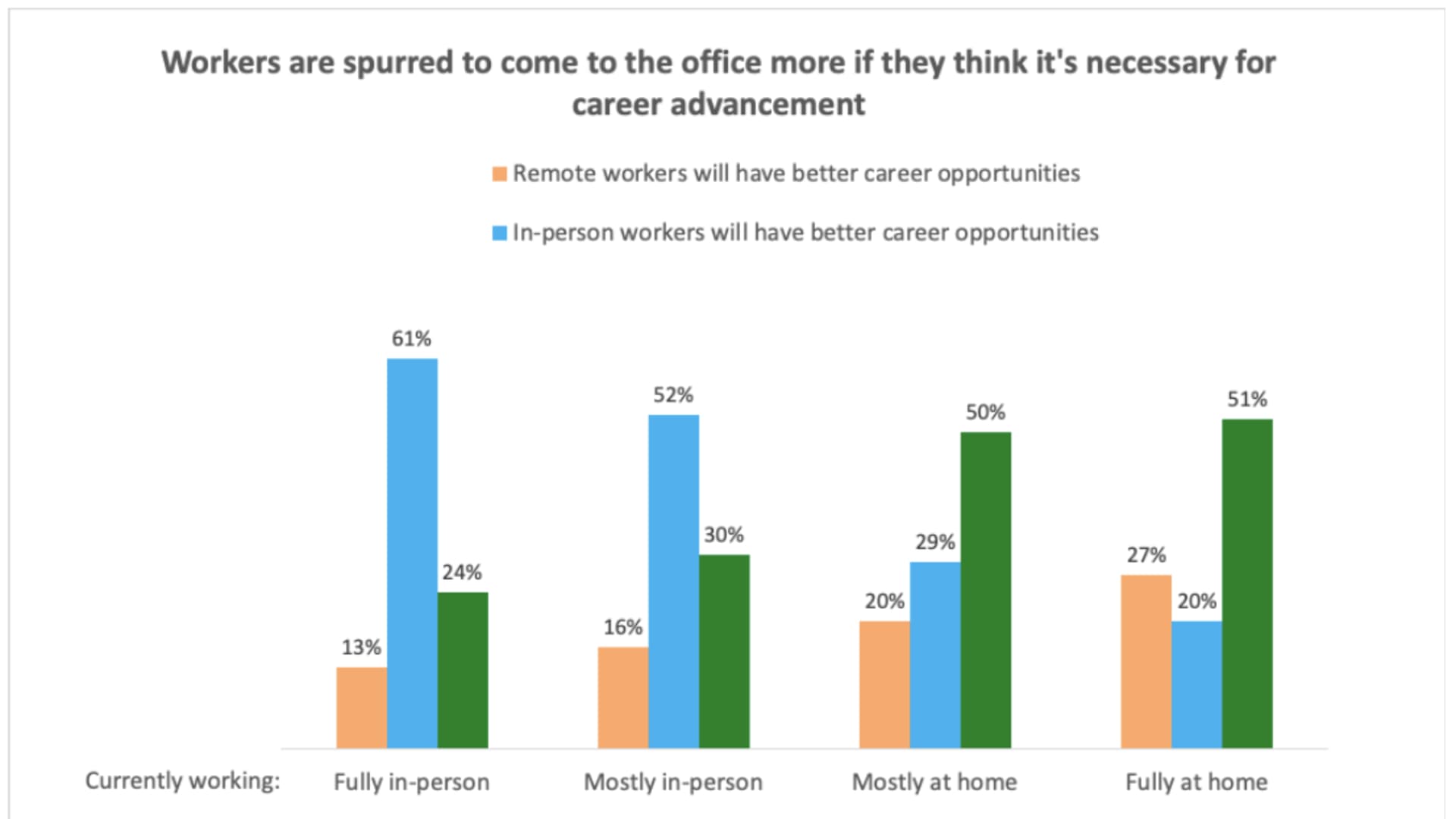
- Elon Musk threatened Tesla workers who don't want to come back to the office full-time, saying they should come back or resign, according to leaked emails.
- While many knowledge workers and their corporate employers have adopted hybrid work, the truth is that a majority of American workers are already back in workplaces.
- Yet there's a caveat: remote workers are happier, according to a new CNBC|Momentive Workforce Survey.
Most workers have returned to the office, but convincing remaining at-home hold-outs to return to in-person work is proving difficult. In major cities like New York, San Francisco, and Chicago, office vacancy rates remain high, and demand for new office space is just 66% of the pre-pandemic average.
In the latest CNBC|Momentive Workforce Survey of more than 9,000 workers across the U.S, 65% say they are now working fully in-person from their office or workplace, 14% are working mostly in-person, 9% are working mostly remotely, and 11% are working fully remotely.
Those numbers have shifted substantially from April 2021, when 60% of the workforce was working fully in-person and 22% were working fully remotely. That means the in-person and hybrid contingents of the workforce have picked up converts over the last year, while the number working fully remotely dwindles.
The choice between remote or in-person work is no longer a binary one for workers, with about a quarter of all workers choosing what they may see as the best of both worlds: some time at work in the office and some time working from home.
In terms of happiness, remote work tops in-person
Companies are going to extreme lengths to coax workers back to the office, but many of those who remain at home are perfectly content to stay there. In our data, workers who are currently doing their jobs fully from home or mostly from home are happier than those who are working fully or mostly from the office. Just more than half (52%) of fully remote workers say they are very satisfied with their jobs, compared with 47% of workers working mostly from home, 40% of workers working mostly from the office, and 47% of workers working fully from the office.
Money Report
Throughout the pandemic, many workers have moved farther from the office, leaving them reluctant to face long commutes on a regular basis now that they are being called back in. Others may simply have acclimated to the work-from-home lifestyle, carving out office space in a spare bedroom or corner of the kitchen and finding more time to spend with their families at home.
Get a weekly recap of the latest San Francisco Bay Area housing news. Sign up for NBC Bay Area’s Housing Deconstructed newsletter.
Fully remote workers report greater satisfaction with their pay, recognition from colleagues, opportunities for advancement, and – especially – a greater degree of autonomy that they have over their work. In-person workers score more highly on just one measure: 68% consider their job to be very meaningful to them, compared with 60% among remote or mostly remote workers and 54% among workers who work mostly in-person.

Remote workers and in-person workers each have a slightly different value prioritization when thinking about their happiness at work, helping to explain their different choices of work arrangements.
The desire for autonomy, for example, is more important to remote workers than to in-person workers, and may be driving some of the self-selection into jobs that can be done remotely compared with those that require employees to show up to the office. Just 14% of workers who have been doing their jobs in-person say "having control over how you do your job" is the most important factor in their happiness at work, compared with 27% among workers who are working remotely.
On the other hand, workers who are currently doing their jobs fully or mostly from home are a bit less likely than workers who have been doing their jobs fully or mostly in-person to say "having colleagues who value [their] work" is the most important factor in their overall job satisfaction. They are also less likely to say "having opportunities to advance" is the most important factor in their work happiness.
As these new dynamics between remote, hybrid, and in-person workers solidify, that path for career advancement will be a particularly challenging issue for companies to consider.
Workers think showing up will give them a career boost
In our survey last year, we reported that more than half of workers expected in-person employees to have better career opportunities in the future than those who work remotely. A year later, that number hasn't budged, despite the fact that the "return to office" has been well underway.
Thinking long-term, 52% of workers continue to say they expect in-person workers to have better career opportunities available to them than remote workers, while 30% expect remote and in-person workers to have equal opportunities to advance, and just 15% expect remote workers to have better opportunities.
Some nuances of the remote/in-person/hybrid dynamic aren't easily captured in surveys. Workers that spend part of their time at home and part in the office may have drastically different experiences that are dependent on various factors: how many of their colleagues are in the office? Do they manage a team? How long have they been in their current role, or their current company? Are they more extroverted or introverted?

In our data, we see evidence that hybrid workers can make adjustments to their own routines to maximize their long-term career satisfaction. Hybrid workers who work mostly in-person, for example, are more likely than hybrid workers who work mostly from home to say that in-person workers will have better career opportunities at their company a year from now. That difference in expectation around career development could be the key driver pulling them into the office more than their colleagues who are more often at home.
HR teams can take some comfort in the fact that employees are savvy enough to realize what is best for themselves. When determining which push and pull factors can be most helpful in bringing more workers back in-person, they can start by simply asking workers what matters to them and building company policies accordingly.






